Xuanhua He
FullDiT2: Efficient In-Context Conditioning for Video Diffusion Transformers
Jun 05, 2025Abstract:Fine-grained and efficient controllability on video diffusion transformers has raised increasing desires for the applicability. Recently, In-context Conditioning emerged as a powerful paradigm for unified conditional video generation, which enables diverse controls by concatenating varying context conditioning signals with noisy video latents into a long unified token sequence and jointly processing them via full-attention, e.g., FullDiT. Despite their effectiveness, these methods face quadratic computation overhead as task complexity increases, hindering practical deployment. In this paper, we study the efficiency bottleneck neglected in original in-context conditioning video generation framework. We begin with systematic analysis to identify two key sources of the computation inefficiencies: the inherent redundancy within context condition tokens and the computational redundancy in context-latent interactions throughout the diffusion process. Based on these insights, we propose FullDiT2, an efficient in-context conditioning framework for general controllability in both video generation and editing tasks, which innovates from two key perspectives. Firstly, to address the token redundancy, FullDiT2 leverages a dynamic token selection mechanism to adaptively identify important context tokens, reducing the sequence length for unified full-attention. Additionally, a selective context caching mechanism is devised to minimize redundant interactions between condition tokens and video latents. Extensive experiments on six diverse conditional video editing and generation tasks demonstrate that FullDiT2 achieves significant computation reduction and 2-3 times speedup in averaged time cost per diffusion step, with minimal degradation or even higher performance in video generation quality. The project page is at \href{https://fulldit2.github.io/}{https://fulldit2.github.io/}.
UNIC: Unified In-Context Video Editing
Jun 04, 2025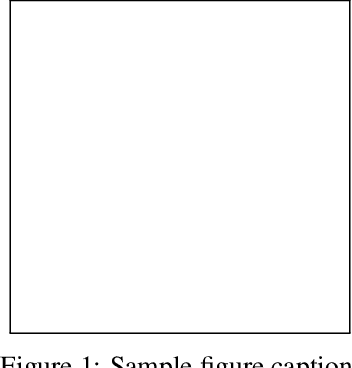
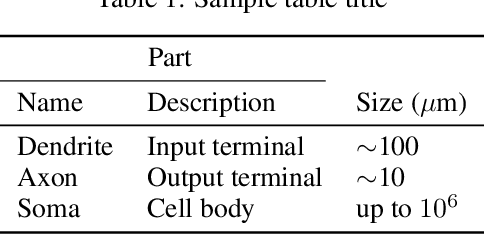
Abstract:Recent advances in text-to-video generation have sparked interest in generative video editing tasks. Previous methods often rely on task-specific architectures (e.g., additional adapter modules) or dedicated customizations (e.g., DDIM inversion), which limit the integration of versatile editing conditions and the unification of various editing tasks. In this paper, we introduce UNified In-Context Video Editing (UNIC), a simple yet effective framework that unifies diverse video editing tasks within a single model in an in-context manner. To achieve this unification, we represent the inputs of various video editing tasks as three types of tokens: the source video tokens, the noisy video latent, and the multi-modal conditioning tokens that vary according to the specific editing task. Based on this formulation, our key insight is to integrate these three types into a single consecutive token sequence and jointly model them using the native attention operations of DiT, thereby eliminating the need for task-specific adapter designs. Nevertheless, direct task unification under this framework is challenging, leading to severe token collisions and task confusion due to the varying video lengths and diverse condition modalities across tasks. To address these, we introduce task-aware RoPE to facilitate consistent temporal positional encoding, and condition bias that enables the model to clearly differentiate different editing tasks. This allows our approach to adaptively perform different video editing tasks by referring the source video and varying condition tokens "in context", and support flexible task composition. To validate our method, we construct a unified video editing benchmark containing six representative video editing tasks. Results demonstrate that our unified approach achieves superior performance on each task and exhibits emergent task composition abilities.
Distilling Textual Priors from LLM to Efficient Image Fusion
Apr 09, 2025



Abstract:Multi-modality image fusion aims to synthesize a single, comprehensive image from multiple source inputs. Traditional approaches, such as CNNs and GANs, offer efficiency but struggle to handle low-quality or complex inputs. Recent advances in text-guided methods leverage large model priors to overcome these limitations, but at the cost of significant computational overhead, both in memory and inference time. To address this challenge, we propose a novel framework for distilling large model priors, eliminating the need for text guidance during inference while dramatically reducing model size. Our framework utilizes a teacher-student architecture, where the teacher network incorporates large model priors and transfers this knowledge to a smaller student network via a tailored distillation process. Additionally, we introduce spatial-channel cross-fusion module to enhance the model's ability to leverage textual priors across both spatial and channel dimensions. Our method achieves a favorable trade-off between computational efficiency and fusion quality. The distilled network, requiring only 10\% of the parameters and inference time of the teacher network, retains 90\% of its performance and outperforms existing SOTA methods. Extensive experiments demonstrate the effectiveness of our approach. The implementation will be made publicly available as an open-source resource.
RelaCtrl: Relevance-Guided Efficient Control for Diffusion Transformers
Feb 21, 2025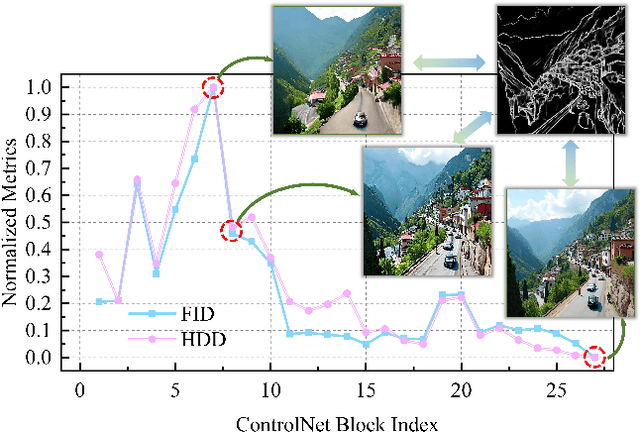
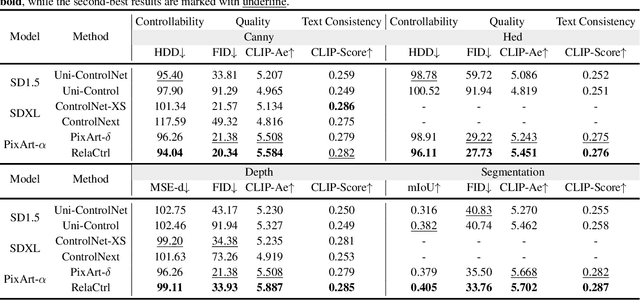
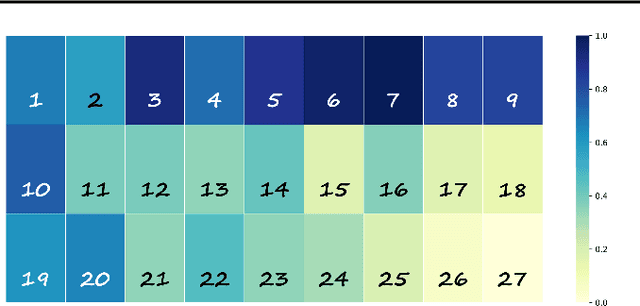

Abstract:The Diffusion Transformer plays a pivotal role in advancing text-to-image and text-to-video generation, owing primarily to its inherent scalability. However, existing controlled diffusion transformer methods incur significant parameter and computational overheads and suffer from inefficient resource allocation due to their failure to account for the varying relevance of control information across different transformer layers. To address this, we propose the Relevance-Guided Efficient Controllable Generation framework, RelaCtrl, enabling efficient and resource-optimized integration of control signals into the Diffusion Transformer. First, we evaluate the relevance of each layer in the Diffusion Transformer to the control information by assessing the "ControlNet Relevance Score"-i.e., the impact of skipping each control layer on both the quality of generation and the control effectiveness during inference. Based on the strength of the relevance, we then tailor the positioning, parameter scale, and modeling capacity of the control layers to reduce unnecessary parameters and redundant computations. Additionally, to further improve efficiency, we replace the self-attention and FFN in the commonly used copy block with the carefully designed Two-Dimensional Shuffle Mixer (TDSM), enabling efficient implementation of both the token mixer and channel mixer. Both qualitative and quantitative experimental results demonstrate that our approach achieves superior performance with only 15% of the parameters and computational complexity compared to PixArt-delta.
GameGen-X: Interactive Open-world Game Video Generation
Nov 01, 2024



Abstract:We introduce GameGen-X, the first diffusion transformer model specifically designed for both generating and interactively controlling open-world game videos. This model facilitates high-quality, open-domain generation by simulating an extensive array of game engine features, such as innovative characters, dynamic environments, complex actions, and diverse events. Additionally, it provides interactive controllability, predicting and altering future content based on the current clip, thus allowing for gameplay simulation. To realize this vision, we first collected and built an Open-World Video Game Dataset from scratch. It is the first and largest dataset for open-world game video generation and control, which comprises over a million diverse gameplay video clips sampling from over 150 games with informative captions from GPT-4o. GameGen-X undergoes a two-stage training process, consisting of foundation model pre-training and instruction tuning. Firstly, the model was pre-trained via text-to-video generation and video continuation, endowing it with the capability for long-sequence, high-quality open-domain game video generation. Further, to achieve interactive controllability, we designed InstructNet to incorporate game-related multi-modal control signal experts. This allows the model to adjust latent representations based on user inputs, unifying character interaction and scene content control for the first time in video generation. During instruction tuning, only the InstructNet is updated while the pre-trained foundation model is frozen, enabling the integration of interactive controllability without loss of diversity and quality of generated video content.
Shuffle Mamba: State Space Models with Random Shuffle for Multi-Modal Image Fusion
Sep 03, 2024



Abstract:Multi-modal image fusion integrates complementary information from different modalities to produce enhanced and informative images. Although State-Space Models, such as Mamba, are proficient in long-range modeling with linear complexity, most Mamba-based approaches use fixed scanning strategies, which can introduce biased prior information. To mitigate this issue, we propose a novel Bayesian-inspired scanning strategy called Random Shuffle, supplemented by an theoretically-feasible inverse shuffle to maintain information coordination invariance, aiming to eliminate biases associated with fixed sequence scanning. Based on this transformation pair, we customized the Shuffle Mamba Framework, penetrating modality-aware information representation and cross-modality information interaction across spatial and channel axes to ensure robust interaction and an unbiased global receptive field for multi-modal image fusion. Furthermore, we develop a testing methodology based on Monte-Carlo averaging to ensure the model's output aligns more closely with expected results. Extensive experiments across multiple multi-modal image fusion tasks demonstrate the effectiveness of our proposed method, yielding excellent fusion quality over state-of-the-art alternatives. Code will be available upon acceptance.
Training-Free Large Model Priors for Multiple-in-One Image Restoration
Jul 18, 2024Abstract:Image restoration aims to reconstruct the latent clear images from their degraded versions. Despite the notable achievement, existing methods predominantly focus on handling specific degradation types and thus require specialized models, impeding real-world applications in dynamic degradation scenarios. To address this issue, we propose Large Model Driven Image Restoration framework (LMDIR), a novel multiple-in-one image restoration paradigm that leverages the generic priors from large multi-modal language models (MMLMs) and the pretrained diffusion models. In detail, LMDIR integrates three key prior knowledges: 1) global degradation knowledge from MMLMs, 2) scene-aware contextual descriptions generated by MMLMs, and 3) fine-grained high-quality reference images synthesized by diffusion models guided by MMLM descriptions. Standing on above priors, our architecture comprises a query-based prompt encoder, degradation-aware transformer block injecting global degradation knowledge, content-aware transformer block incorporating scene description, and reference-based transformer block incorporating fine-grained image priors. This design facilitates single-stage training paradigm to address various degradations while supporting both automatic and user-guided restoration. Extensive experiments demonstrate that our designed method outperforms state-of-the-art competitors on multiple evaluation benchmarks.
ID-Animator: Zero-Shot Identity-Preserving Human Video Generation
Apr 23, 2024Abstract:Generating high fidelity human video with specified identities has attracted significant attention in the content generation community. However, existing techniques struggle to strike a balance between training efficiency and identity preservation, either requiring tedious case-by-case finetuning or usually missing the identity details in video generation process. In this study, we present ID-Animator, a zero-shot human-video generation approach that can perform personalized video generation given single reference facial image without further training. ID-Animator inherits existing diffusion-based video generation backbones with a face adapter to encode the ID-relevant embeddings from learnable facial latent queries. To facilitate the extraction of identity information in video generation, we introduce an ID-oriented dataset construction pipeline, which incorporates decoupled human attribute and action captioning technique from a constructed facial image pool. Based on this pipeline, a random face reference training method is further devised to precisely capture the ID-relevant embeddings from reference images, thus improving the fidelity and generalization capacity of our model for ID-specific video generation. Extensive experiments demonstrate the superiority of ID-Animator to generate personalized human videos over previous models. Moreover, our method is highly compatible with popular pre-trained T2V models like animatediff and various community backbone models, showing high extendability in real-world applications for video generation where identity preservation is highly desired. Our codes and checkpoints will be released at https://github.com/ID-Animator/ID-Animator.
Pan-Mamba: Effective pan-sharpening with State Space Model
Feb 19, 2024



Abstract:Pan-sharpening involves integrating information from lowresolution multi-spectral and high-resolution panchromatic images to generate high-resolution multi-spectral counterparts. While recent advancements in the state space model, particularly the efficient long-range dependency modeling achieved by Mamba, have revolutionized computer vision community, its untapped potential in pan-sharpening motivates our exploration. Our contribution, Pan-Mamba, represents a novel pansharpening network that leverages the efficiency of the Mamba model in global information modeling. In Pan-Mamba, we customize two core components: channel swapping Mamba and cross-modal Mamba, strategically designed for efficient cross-modal information exchange and fusion. The former initiates a lightweight cross-modal interaction through the exchange of partial panchromatic and multispectral channels, while the latter facilities the information representation capability by exploiting inherent cross-modal relationships. Through extensive experiments across diverse datasets, our proposed approach surpasses state-of-theart methods, showcasing superior fusion results in pan-sharpening. To the best of our knowledge, this work is the first attempt in exploring the potential of the Mamba model and establishes a new frontier in the pan-sharpening techniques. The source code is available at https://github.com/alexhe101/Pan-Mamba .
Enhancing RAW-to-sRGB with Decoupled Style Structure in Fourier Domain
Jan 04, 2024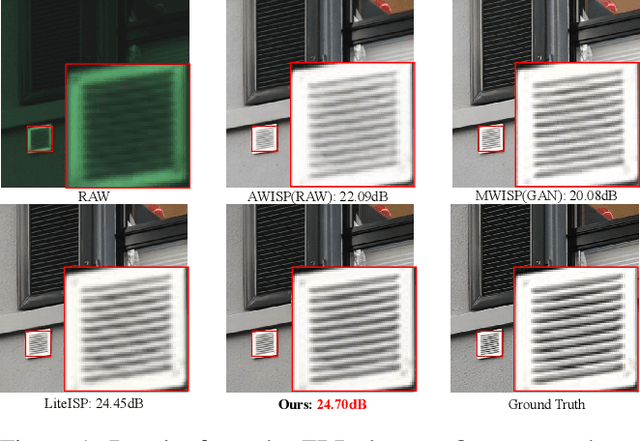

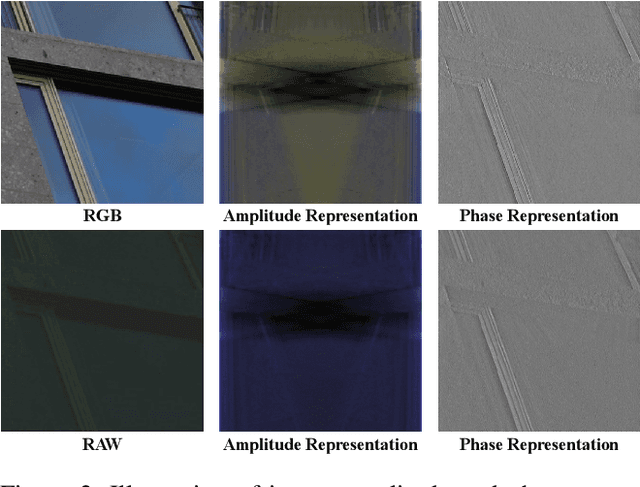

Abstract:RAW to sRGB mapping, which aims to convert RAW images from smartphones into RGB form equivalent to that of Digital Single-Lens Reflex (DSLR) cameras, has become an important area of research. However, current methods often ignore the difference between cell phone RAW images and DSLR camera RGB images, a difference that goes beyond the color matrix and extends to spatial structure due to resolution variations. Recent methods directly rebuild color mapping and spatial structure via shared deep representation, limiting optimal performance. Inspired by Image Signal Processing (ISP) pipeline, which distinguishes image restoration and enhancement, we present a novel Neural ISP framework, named FourierISP. This approach breaks the image down into style and structure within the frequency domain, allowing for independent optimization. FourierISP is comprised of three subnetworks: Phase Enhance Subnet for structural refinement, Amplitude Refine Subnet for color learning, and Color Adaptation Subnet for blending them in a smooth manner. This approach sharpens both color and structure, and extensive evaluations across varied datasets confirm that our approach realizes state-of-the-art results. Code will be available at ~\url{https://github.com/alexhe101/FourierISP}.
 Add to Chrome
Add to Chrome Add to Firefox
Add to Firefox Add to Edge
Add to Edge